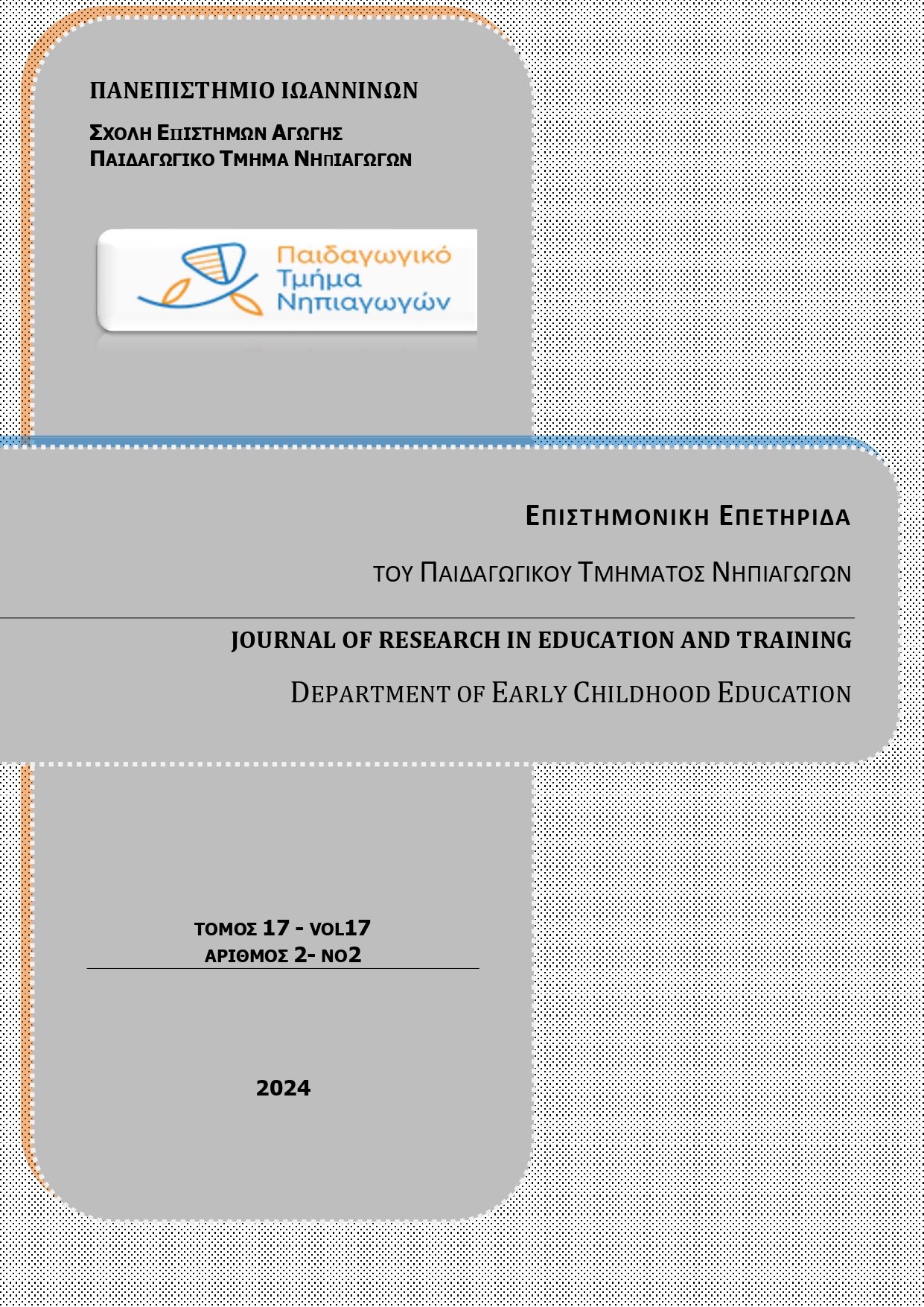Η Διερεύνηση της προβλεπτικής εγκυρότητας τεσσάρων κριτηρίων αξιολόγησης της γραπτής έκφρασης

Περίληψη
Η παρούσα μελέτη διερευνά την προβλεπτική εγκυρότητα τεσσάρων κριτηρίων αξιολόγησης της γραπτής έκφρασης μαθητών/τριών των τελευταίων τάξεων του δημοτικού σε ένα έργο συγγραφής κειμένου με την τεχνική ημιτελών και ανακατεμένων φράσεων και ένα με την τεχνική των εικόνων. Εξετάστηκε η συσχέτιση των επιδόσεων μεταξύ των δύο τεχνικών καθοδήγησης, η επίδραση της ηλικίας και του φύλου των μαθητών/τριών και η ισχύς των επιμέρους κριτηρίων στη γενική επίδοση της κάθε δοκιμασίας. Στη βιβλιογραφία οι διαστάσεις που αξιολογούνται στα γραπτά κείμενα ποικίλλουν ανάλογα με την ηλικία και τον πληθυσμό και περιλαμβάνονται κριτήρια που σχετίζονται με την ποιότητα, την παραγωγικότητα, την πολυπλοκότητα και την οργάνωση του κειμένου. Στόχος της έρευνας ήταν να εισφέρει νέα δεδομένα σχετικά με την αξιολόγηση της γραπτής έκφρασης των μαθητών/τριών των τελευταίων τάξεων δημοτικού και να αναδείξει τα ισχυρότερα κριτήρια μέτρησης του γραπτού λόγου σε κάθε ηλικία. Στην έρευνα συμμετείχαν συνολικά 93 μαθητές/τριες τετάρτης, πέμπτης και έκτης δημοτικού. Από τα αποτελέσματα διαφαίνεται ότι η συνάφεια μεταξύ των επιδόσεων των μαθητών/τριών στις δύο δοκιμασίες ήταν στατιστικά σημαντική και κυμάνθηκε σε μέτριο επίπεδο. Η επίδραση της ηλικίας ήταν σημαντική και οι μαθητές/τριες της τετάρτης τάξης παρουσίασαν χαμηλότερες επιδόσεις στα περισσότερα κριτήρια των δύο δοκιμασιών. Αν και δεν αναδείχτηκε στατιστικά σημαντική επίδραση του φύλου των μαθητών/τριών, ωστόσο τα κορίτσια επέδειξαν καλύτερες επιδόσεις στα περισσότερα κριτήρια των δύο δοκιμασιών. Το κριτήριο της ορθογραφίας φαίνεται να έχει μεγάλη ισχύ και στις δύο δοκιμασίες και στις τρεις ηλικιακές ομάδες. Στη συγγραφή κειμένου με την τεχνική ημιτελών και ανακατεμένων φράσεων φαίνεται να είναι ισχυρό και το κριτήριο της δομής, ενώ το κριτήριο της παραγωγικότητας παρουσίασε τη μικρότερη ισχύ και στις τρεις ηλικιακές ομάδες. Τα αποτελέσματα της μελέτης συζητώνται σε σχέση με τα περιορισμένα ακόμα ερευνητικά ευρήματα για την ισχύ των διαστάσεων που αξιολογούνται στα γραπτά κείμενα σε παιδιά των τελευταίων τάξεων δημοτικού και διατυπώνονται προτάσεις για μελλοντική έρευνα.
Λεπτομέρειες άρθρου
- Πώς να δημιουργήσετε Αναφορές
-
Ξάνθη Σ. (2024). Η Διερεύνηση της προβλεπτικής εγκυρότητας τεσσάρων κριτηρίων αξιολόγησης της γραπτής έκφρασης . Επιστημονική Επετηρίδα Παιδαγωγικού Τμήματος Νηπιαγωγών Πανεπιστημίου Ιωαννίνων, 17(2), 1–41. https://doi.org/10.12681/jret.35230
- Τεύχος
- Τόμ. 17 Αρ. 2 (2024): -
- Ενότητα
- Άρθρα

Αυτή η εργασία είναι αδειοδοτημένη υπό το CC Αναφορά Δημιουργού – Μη Εμπορική Χρήση – Παρόμοια Διανομή 4.0.
Οι συγγραφείς που δημοσιεύουν σε αυτό το περιοδικό συμφωνούν στους παρακάτω όρους :
1. Οι συγγραφείς διατηρούν τα δικαιώματα πνευματικής ιδιοκτησίας επί των άρθρων τους, χορηγώντας στο περιοδικό το δικαίωμα της πρώτης δημοσίευσης. Άρθρα που δημοσιεύονται στο περιοδικό «Επιστημονική Επετηρίδα του Παιδαγωγικού Τμήματος Νηπιαγωγών της Σχολής Επιστημών Αγωγής του Πανεπιστημίου Ιωαννίνων» διατίθενται με άδεια Creative Commons 4.0, σύμφωνα με την οποία μπορούν να χρησιμοποιούνται ελεύθερα, με αναφορά στο/στη συγγραφέα και στην πρώτη δημοσίευση για μη κερδοσκοπικούς σκοπούς.
2. Οι συγγραφείς μπορούν να συνάπτουν ξεχωριστές, πρόσθετες συμβάσεις και συμφωνίες για την μη αποκλειστική διανομή του δημοσιευμένου στο περιοδικό έργου (π.χ. κατάθεση σε ένα ιδρυματικό αποθετήριο ή δημοσίευση σε ένα βιβλίο), με την αναγνώριση της πρώτης δημοσίευσης σε αυτό περιοδικό.
3. Στους συγγραφείς επιτρέπεται να δημοσιεύσουν την εργασία τους online (κατά προτίμηση σε ιδρυματικά αποθετήρια ή στην ιστοσελίδα τους) πριν και κατά τη διάρκεια της διαδικασίας υποβολής, καθώς αυτό μπορεί να οδηγήσει σε παραγωγικές ανταλλαγές, όπως επίσης και παλαιότερες και ευρύτερες παραπομπές δημοσιευμένων εργασιών (The Effect of Open Access)


